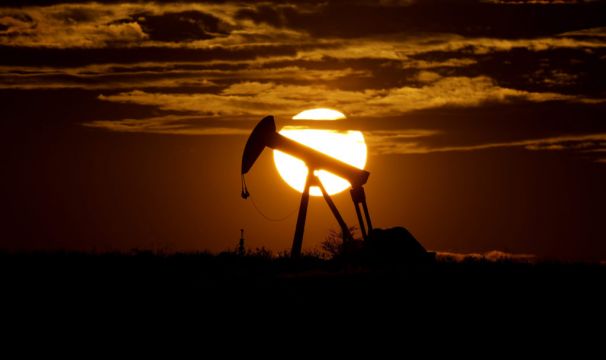As nations prepare to gather for the Cop26 climate summit in Glasgow, the Opec oil cartel has issued a reminder that crude will continue to be the world’s leading source of energy for decades – especially as less-wealthy countries seek higher growth and improved standards of living.
Opec said more electric vehicles on the road and the push for alternative and renewable energy will indeed usher in an era of declining demand for oil in rich countries.
But the energy needs of expanding economies in other parts of world will still leave oil as the world’s number one source of energy through 2045, Opec said in its annual World Oil Outlook (WOO).
OPEC liquids rebound after 2020 adjustments, settling at around 34 mb/d in the mid-2020s.
With Non-OPEC supply peaking in late 2020s, OPEC liquids have the potential to grow to 42.7 mb/d by 2045.#WOO2021 pic.twitter.com/YpLAUTjf0a— OPEC (@OPECSecretariat) September 28, 2021
Advertisement
The long-term report comes against the background of sharply higher oil and gas prices.
Brent crude touched over 80 dollars per barrel on Tuesday, a three-year high, while the US oil benchmark rose to 75.92 dollars, also a three-year high.
Hurricane Ida slammed into a critical port that serves as the primary support hub for the Gulf of Mexico’s deepwater offshore oil and gas industry in the US.
Long-term oil demand growth will be limited by growing penetration of EV's.
Total vehicle fleet: 2.6 billion by 2045.
EV fleet will approach 500 million vehicles by 2045 (almost 20% of the global fleet).
By 2045: 76% ICE vehicles vs 24% of alternative vehicles.#WOO2021 pic.twitter.com/PhMfpfVtTb— OPEC (@OPECSecretariat) September 28, 2021
Advertisement
At the same time, Opec has increased production slowly after deep cuts in 2020 during the depths of the pandemic.
“What is clear in this year’s WOO is that energy and oil demand have picked up significantly in 2021, after the massive drop in 2020, and continued expansion is forecast for the longer-term,” the report said.
“Global primary energy demand is expected to increase by 28% in the period between 2020 and 2045, with all energies required, driven by an expected doubling in size of the global economy and the addition of around 1.7 billion people worldwide by 2045.”
Only coal will see less use, while other sources of energy will see increasing demand, though the share will shift to include a bigger proportion for renewables, nuclear and natural gas, according to the group.
Estimated crude distillation capacity additions in the medium-term are a robust 6.9 mb/d, while another 7.1 mb/d of incremental capacity is required in the long-term, predominantly in developing countries.
Most additions will be located in the Asia, the Middle East and Africa. pic.twitter.com/kfL2YRrBJe— OPEC (@OPECSecretariat) September 28, 2021
The 340-page report sketches out a future of declining demand for oil in wealthier countries that belong to the 38-member Organisation for Economic Development and Cooperation, as efforts to fight climate change take hold in the form of renewables and alternative fuels in cars, airplanes and ships.
It forecasts that the world’s vehicle fleet would grow by 1.1 billion to 2.6 billion by the end of the report’s time frame in 2045 – and that 500 million of those would be electric powered, or 20% of all vehicles.
But growing populations and expanding middle classes in the rest of the world including China and India will mean increased demand for oil between 2020 and 2045, although much of that increase will take place in the earlier part of that period, the report produced by Opec’s secretariat in Vienna said.
Oil will satisfy 28.1% of the world’s energy demand by 2045, down from 30% in 2020 – but ahead of natural gas with 24.4% and coal with 17.4%.
Cumulatively, $9.2 trillion will be required for long-term upstream investment in order to meet future demand needs, with $1.5 trillion required in the downstream and $1.1 trillion in the midstream.
Total oil-related investment requirements until 2045 will be $11.8 trillion. pic.twitter.com/EnNo766QLj— OPEC (@OPECSecretariat) September 28, 2021
Hydroelectric, nuclear and biomass energy sources and other renewables such as wind and solar will make up the rest.
A key reason cited for declining energy use in the more-developed world was demography: shrinking and aging populations that usher in lower economic growth.
The report noted that growing awareness of the need to accelerate actions to address climate change have resulted in ambitious new policy intentions to reach net zero emissions by 2050. The European Union, the United States, Japan, the UK, Canada and Brazil have proposed roadmaps to meet these new goals.
OPEC liquids rebound after 2020 adjustments, settling at around 34 mb/d in the mid-2020s.
With Non-OPEC supply peaking in late 2020s, OPEC liquids have the potential to grow to 42.7 mb/d by 2045.#WOO2021 pic.twitter.com/YpLAUTjf0a— OPEC (@OPECSecretariat) September 28, 2021
Opec, however, noted “considerable doubts as to whether all these ambitious climate-mitigation commitments will be met in the proposed timeframe”.
For example, the European Union in July spelled out its Fit for 55 package, in which the 27-country bloc vowed to reduce emissions by 55% from 1990 levels by 2030.
Opec said that the plan “remains exactly that for the time being: a plan, which still needs to be negotiated and agreed by all EU member states, leaving ample scope for exceptions and watering-down”.
The UK will host the 26th UN climate change conference from October 31-November 12 in Glasgow, where national leaders will seek ways to reduce the emission of greenhouse gases and limit the rise in global temperatures.







